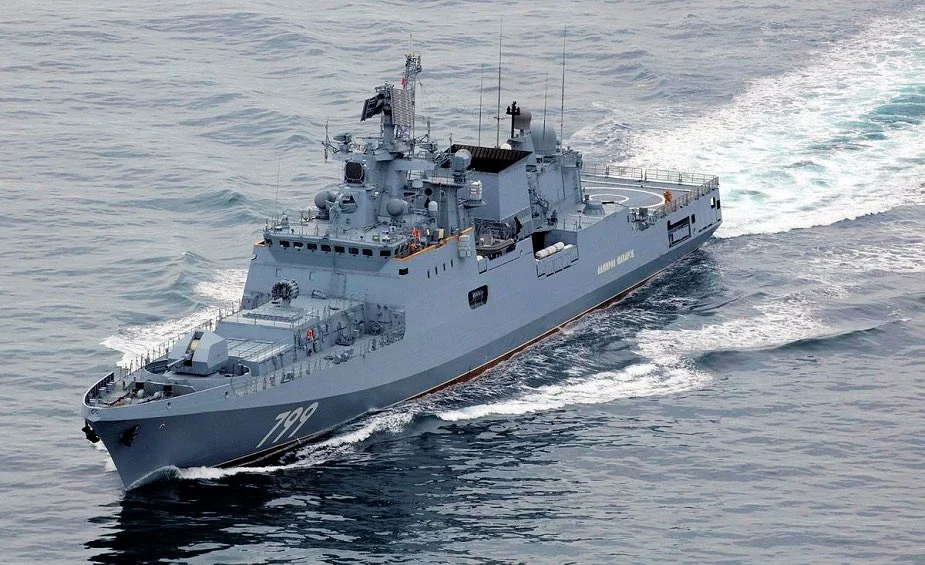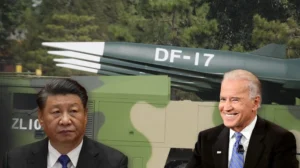Source : The EurAsian Times

The Indian Navy’s eagerly-awaited advanced stealth frigate, Tushil, has reportedly commenced its crucial sea trials in Russia, overcoming persistent delays linked to the ongoing conflict in Ukraine.
Tushil, the first of two additional Krivak/Talwar class stealth frigates constructed by Russia at the Yantar Shipyard in Kaliningrad for the Indian Navy, embarked on its sea trials on March 5, marking a milestone in its journey toward deployment.
The initiation of sea trials was captured in a video that surfaced online, showcasing Tushil departing from the Baltiysk Naval Base.
The footage, first shared on the Telegram channel Baltiysk Life, quickly gained attention on social media platforms, including X (formerly Twitter).
The sea trials, a pivotal phase in Tushil’s development, are expected to involve rigorous testing of the vessel’s performance, capabilities, and systems in real-world conditions. These trials are essential to ensure that the frigate meets the Indian Navy’s stringent operational requirements.
The milestone comes after over two years since the vessel was ceremoniously launched from dry dock into the waters at Yantar Shipyard, Kaliningrad, Russia, in the presence of D. Bala Venkatesh Varma, the then-Indian envoy in Russia, and other senior dignitaries.
The Tushil, which means “protector shield” in Sanskrit, is one of four follow-on frigates contracted by India from Russia, with two (INS Tushil and INS Tamala) being constructed by Russia and the remaining two being built in India through technology transfer.
However, the two frigates being constructed by Moscow for New Delhi have been facing delays in their delivery. In August 2022, they missed their deadline by six months due to the war in Ukraine, following a previous nine-month delay attributed to the Covid-19 pandemic.
Subsequently, the anticipated delivery dates of November 2023 and April 2024 were further postponed by six months to May and October 2024.
In August 2023, Alexey Rakhmanov, director-general of the United Shipbuilding Corporation of Russia, explained that delays were caused by the supply of certain equipment, which had to undergo extensive journeys to reach Russia.
Rakhmanov further said that delays in payments, attributed to Western sanctions on the use of the global SWIFT interbank system, had also contributed to the setbacks in the frigates’ construction timeline.
Talwar-Class Stealth Frigates
The Indian Navy operates six Talwar-class frigates, which were acquired in two batches of three each in 1997 and 2006.
The commissioning of these frigates occurred over several years, with INS Talwar, the first frigate of the initial batch, being commissioned in June 2003 and INS Trikand, the final frigate of the second batch, being commissioned in June 2013.
In October 2016, India and Russia entered into an Inter-Governmental Agreement for the procurement of four additional stealth frigates, subsequently finalizing a $1-billion deal for direct purchase.
This arrangement stipulated the acquisition of two frigates off-the-shelf, while the remaining two were slated for construction by Goa Shipyard Limited.
These advanced Talwar-class stealth frigates are based on the Russian Krivak-III/IV class frigates or Project 11356, known as the ‘Admiral Grigorovich’ class in the Russian Naval Service.

The first two frigates, INS Tushil and INS Tamala were originally constructed for the Russian Navy under the names Admiral Butakov and Admiral Istomin, respectively.
Their construction was abruptly halted in 2014 due to the tensions between Ukraine and Russia in the Donbas region. The Ukrainians reportedly suspended the delivery of Zorya gas-turbine engines necessary to power these frigates.
As a result, Russia decided to sell these frigates to India in 2016. India then faced the challenge of acquiring the Zorya gas turbines required for the frigates. Eventually, India managed to obtain these engines from Ukraine and subsequently shipped them to Russia for installation.
For the remaining two frigates being constructed in India, a significant development occurred in November 2018 when Goa Shipyard Limited (GSL) entered into a $500 million agreement with Rosoboronexport of Russia.
This deal aimed to provide materials, designs, and specialized assistance for the local manufacturers of the two frigates. Subsequently, in January 2019, the contract was formally signed between India’s Ministry of Defence and GSL.
The construction milestones for these frigates began with GSL laying the keel for the first ship in January 2021, followed by the keel laying for the second ship in June 2021. According to the Indian Navy’s plans, the first GSL frigate is expected to be delivered in 2026, with the second six months later.
These warships are equipped with advanced stealth technology designed to minimize their radar and underwater noise signatures, enhancing their stealth capabilities.
They incorporate a range of equipment, including surface-to-surface missiles, sonar systems, surface surveillance radar, communication suites, and anti-submarine warfare systems, all supplied by Indian sources.
Additionally, they are armed with Russian surface-to-air missiles and gun mounts, providing comprehensive offensive and defensive capabilities. This combination of Indian and Russian technologies ensures a powerful and versatile platform for various naval operations.






